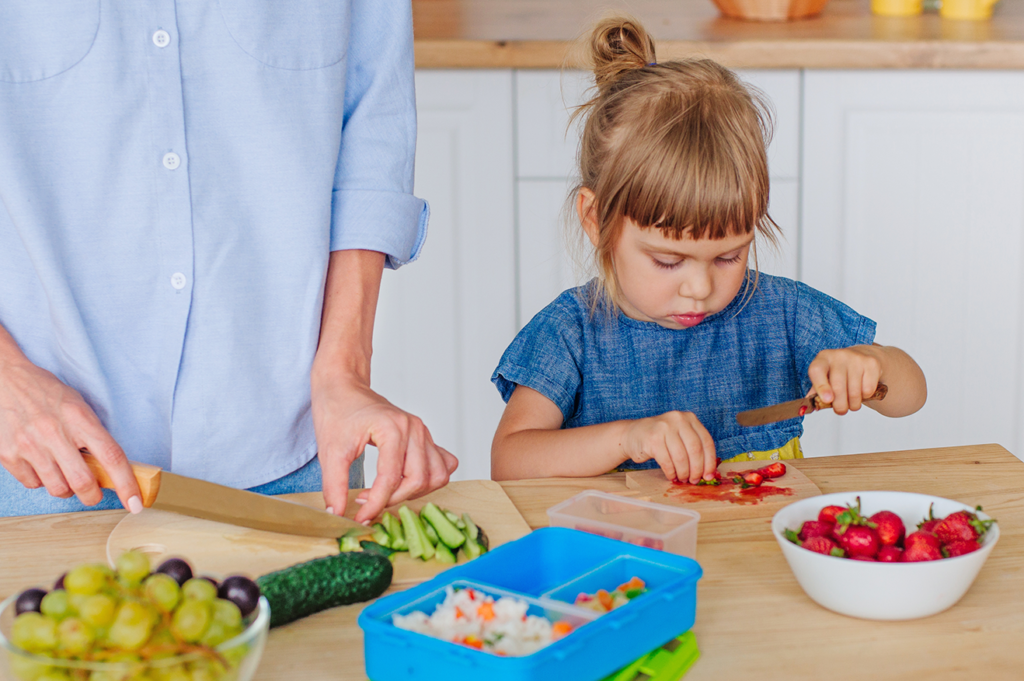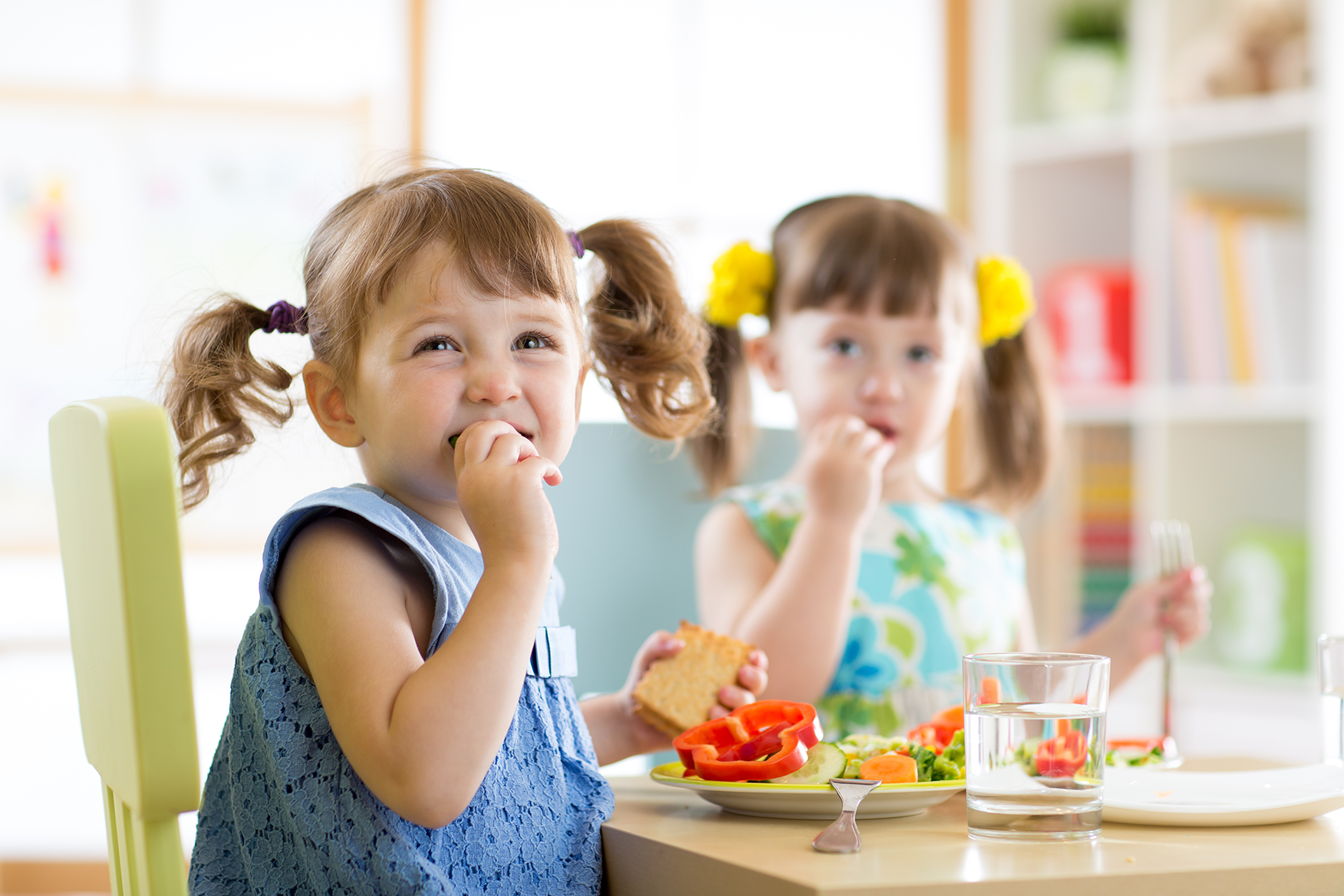The endless debate between schools and parents about what constitutes a suitable lunchbox appears to be one that is destined to be fought ad infinitum.

It seems like every week there’s news of a school declaring it’s their place to decide what children eat, and irrespective of the scientific research they have to back it up, it’s difficult to fathom why homemade biscuits are awful but shop-bought muesli bars are okay if they say “now with extra fibre” on the packaging.
Educating children (and parents) on nutrition and healthy eating is a great idea (and it’d probably save parents many lonely hours on Google typing variations of “healthy lunch snacks”), but perhaps this should not mean enforcing rules.
Allergies aside, if a school wants to hold nutrition seminars for parents and children or release brochures on healthy lunches (preferably backed by a nutritionist), that’s a great public service. Stopping a child from eating the food the parent sent to school for them is not.
School is a time when children start to make independent choices about their lifestyles.
School aged children learn quickly and are influenced by friends and popular trends so it is an important time to talk about and encourage healthy food habits – and what better time than during Healthy Lunchbox Week – a Nutrition Australia initiative that aims to inspire parents and carers across Australia to create healthy lunchboxes their children will enjoy.
Did you know children consume around 30 per cent of their daily food intake at school, and most of this comes from the contents of their lunchbox. What children eat during their day at school plays a crucial role in their learning and development, so involving children in planning and preparing their own lunchboxes gives them the opportunity to learn about healthy eating, and also gives them a chance to make autonomous decisions about what they will be eating during the day.
Involve children in healthy choices
Tips to help get kids involved include:
- Talk to your children about what they would like to have in their lunchbox. Discuss healthier food and drink choices and decide what will be in the lunchbox together.
- Write a shopping list together. Take your children shopping with you and let them choose foods and drinks from the shopping list.
- Encourage your children help prepare their lunchboxes. Older children may be able to prepare most of their lunch themselves, and younger children can help with making sandwiches or cutting up soft fruit. It is a good idea to prepare lunchboxes the evening before to allow children to participate.

What to put in healthier school lunches
Try planning a healthy lunch box to start the school year. Talk to your children and discuss what they would be happy to have included.
The six key parts to a healthy lunchbox include:
- Fruit – best choices include fresh or tinned fruit. Dried fruit is sticky and high in sugar, so have it occasionally.
- Vegetables – try fresh crunchy vegetable sticks with dip or a small container with mixed vegetables such as cherry tomatoes, carrot sticks, capsicum and cucumber.
- Milk, yoghurt or cheese – you can use reduced-fat options for children over the age of 2 years. For children who cannot tolerate milk products, offer appropriate daily alternatives like calcium fortified soy or rice drink or soy yoghurt.
- Meat or meat alternative foods – try lean meat (like chicken strips), a hard-boiled egg or peanut butter. If your school or childcare centre has a nut-free policy, peanut butter and other nuts should not be included in your child’s lunchbox.
- Grain or cereal foods – like a bread roll, flat bread, fruit bread or some crackers (wholegrain or wholemeal options).
- Drinks – as always, water is best.
Tips for healthy lunchboxes
- Cut up large pieces of fruit and put them in a container – this makes it easier to eat, especially if your child has trouble biting into large fruit. Send a damp face washer to help with extra juicy fruit.
- In the warmer months, send frozen milk, yoghurt or water, or even frozen orange segments. This makes a great refreshing snack and helps to keep the lunch box cool.
- Go for colour and crunch in the lunch box by offering a variety of colourful vegetables and fruit.
What not to put in healthier school lunches
Some items do not belong in a healthy school lunchbox.
Six items to avoid when preparing lunch for your children include:
- All sweet drinks such as fruit juices, fruit drinks, cordials, sports drinks, energy drinks, flavoured waters, flavoured mineral waters, iced teas and soft drinks. These are high in energy (kilojoules) and sugar and can lead to weight gain and oral health problems in children.
- Dried fruit bars and ‘straps’. These are low in fibre and are also high in sugar and can stick to children’s teeth, causing tooth decay.
- Dairy desserts, chocolate bars and muesli bars. These are generally high in fat and sugar.
- Chocolate spreads, jams and honey in sandwiches. These add extra, unnecessary sugar to the lunchbox
- Fatty, salty processed meats such as salami and polony.
- ‘Oven-baked’ savoury biscuits. These may sound like healthier options, but some are just as high in salt and fat as crisps.

Artificially sweetened drinks
Artificially sweetened drinks do not add extra kilojoules (energy) or sugar to the lunchbox, but still encourage sweet preference and promote the habit of drinking sweet drinks in children. Artificially sweetened soft drinks are also acidic and can lead to tooth decay. Artificially sweetened drinks should not be included in the lunchbox.
Food safety and lunchboxes
Food is usually stored in lunchboxes for several hours and it is important to keep the lunchbox cool so that the food stays fresh. Some tips to help keep lunchboxes safe include:
- Choose an insulated lunch box or one with a freezer pack.
- Pack a wrapped frozen water bottle or freezer brick next to foods that should be kept cold (for example cheeses, yoghurts, meats and salads).
- Perishable foods such as dairy products, eggs and sliced meats should be kept cool, and eaten within about four hours of preparation. Don’t pack these foods if just cooked. First cool in the refrigerator overnight.
- If making lunches ahead of time, keep them in the fridge until leaving for school or freeze them in advance.
- If you include leftover meals such as meats, pasta and rice dishes, make sure you pack a frozen ice block in the lunch box.
- Ask children to keep packed lunches in their school bag and to keep their bag out of direct sunlight and away from heat, ideally in a cool, dark place such as a locker or, better yet, a fridge if your centre provides so.
Severe food allergy
If your child has a severe food allergy, it is important to develop a management plan with your family doctor, the school, teacher and class. The school or early childhood setting will notify other parents or carers if certain food or drinks need to be kept away from children and limited in the lunch box. Some schools have a nut-free policy and fillings like peanut butter are not allowed.
The average school child will eat more than 2,500 lunches during their 13 years at school, so packing a healthy lunch box plays an important role in meeting their daily nutritional needs, establishing healthy eating habits for life, and ultimately reducing health risks later in life.









